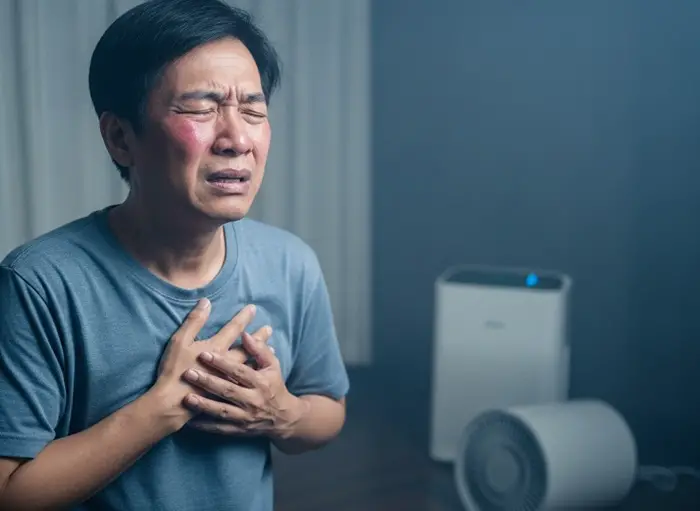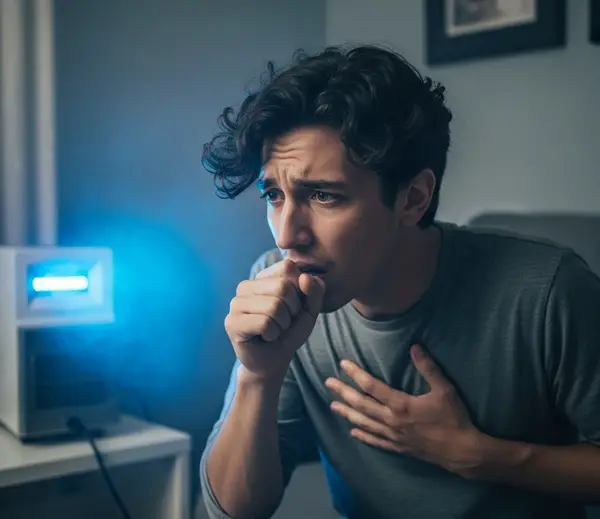
There may be chances you would have heard about the Ozone Layer which protects our Earth from harmful ultraviolet rays. When rays enter through this layer, they get filtered and make it suitable for living beings to thrive on this planet.
Due to the above reason, more and more people are now using devices such as Ozone generators in their homes. Also, there are ozone-based humidifiers and air purifiers that do the required job well, but at the same time, dissipate ozone into the room, which can be sensed by you easily.
You may be surprised to know that ozone exposure will significantly affect your health and even small concentrations (as low as ten parts per billion) in the air will make you realize the smell of ozone. Therefore, you must be more careful when you have a sense of smell of ozone.
Lower ozone concentration levels will be cleared within an hour; however, if the levels happen to be higher, the dissipation duration can be about 3 or 4 hours before it becomes breathable oxygen.
Where Does Ozone Come from in a House?
Ozone in a house can come from several sources, typically related to electronic devices and certain household products. Common sources include:
- Air purifiers: Especially those that use ionization or electrostatic filters, which can generate ozone as a byproduct.
- UV light devices: Some UV lamps, used in air conditioning systems or for germicidal purposes, can create ozone.
- Electrical appliances: Devices such as photocopiers, laser printers, or even older electric motors can produce small amounts of ozone during operation.
- Cleaning products: Some cleaning agents or air fresheners may contain or produce ozone, especially those labeled as “ozone generators.”
- Ozone generators: These are devices marketed to purify the air, but they intentionally release ozone, which can be harmful in high concentrations.
Keep in mind that while ozone at ground level can act as a pollutant, in high concentrations indoors, it can cause respiratory issues and other health problems.

Ozone Dissipation in Home- How Long Does it Last?
The time it takes for ozone to dissipate depends on several factors, including the concentration of ozone, the size of the space, ventilation, temperature, and humidity. Generally, ozone can dissipate in 30 minutes to 4 hours under normal conditions. Here’s a more detailed breakdown:
- Higher concentrations of ozone (such as from an ozone generator) will take longer to break down.
- In well-ventilated areas, ozone will dissipate more quickly as fresh air dilutes the ozone levels.
- Higher temperatures and humidity can accelerate the breakdown of ozone into oxygen.
- Ozone can react with surfaces like fabrics, walls, and other materials, which can also influence how quickly it dissipates.
- For deodorizing the whole house, the duration of 30 hours; sometimes, more will be needed.
- To ensure safety, it’s recommended to allow proper ventilation for at least 1-2 hours after ozone exposure, particularly if an ozone generator has been used.
Ozone-Based Humidifiers and Air Purifiers – How Safe Are They?
According to the EPA (Environmental Protection Agency), there is limited evidence that ozone generators are effective at improving indoor air quality. In fact, ozone can react with common indoor chemicals (like those in household cleaners) to form other harmful compounds.
Standard humidifiers do not typically generate ozone. However, some advanced models that include “sanitizing” features using ozone or UV light to kill germs could produce small amounts of ozone. These should be used cautiously, especially in poorly ventilated rooms.
Ionizers or electrostatic precipitators, often found in air purifiers, can produce ozone as a byproduct. Though the ozone levels from these devices are usually lower than from ozone generators, prolonged or close exposure can still cause health issues.
Safety Considerations
- Avoid using ozone generators in occupied spaces. If using, ensure the room is well-ventilated, and no one is inside until the ozone has dissipated (which can take several hours).
- If you want a safe air purifier, look for HEPA filters or activated carbon filters, which clean the air without generating ozone.
- Check if the product complies with safety standards such as those set by UL 867, which limits ozone emissions from air purifiers to less than 0.05 parts per million (ppm).
In conclusion, the time it takes for ozone to dissipate indoors varies based on factors such as concentration, ventilation, temperature, and humidity. Under normal conditions, ozone can break down within 30 minutes to 4 hours.
Ensuring proper ventilation is key to speeding up the process and reducing potential health risks. After using any device that generates ozone, it’s crucial to allow sufficient time and airflow for the gas to disperse before re-entering the space.
For safety, minimizing exposure to ozone is always recommended, particularly in enclosed environments.
Meen Smith is a nurse by profession who loves writing online, spending time with her family and caring for the elderly. She has already worked as an associate editor on various moms, babies, home appliances, kitchen, and healthy living blogs. In her spare time, she also enjoys drawing, reading/writing kindle eBooks and improving her skills a bit.
